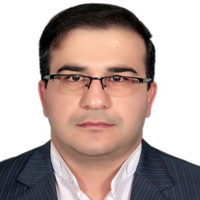Investigating the Distributed Causes of Urban Mobility and its Impact on Resilience in Ahvaz Metropolis
Author(s):
Article Type:
Research/Original Article (دارای رتبه معتبر)
Abstract:
The purpose of this study was to investigate the factors affecting urban sprawl and its impact on livelihoods in Ahwaz metropolis. This research is applied-theoretical in terms of purpose and descriptive-analytical in terms of method. The trend of land use changes showed that the amount of built-up area increased, and the area of green and agricultural land uses and so on decreased. The results of Delphi method shows that economic, political-managerial, technological, social-cultural and natural- environmental factors have the most effect on the dispersal of Ahvaz city, respectively. Also, the results of the evaluation of the spillover effects on the biodiversity indices showed that spillover of the urban spill on the increase of the cost of public utilities and consequently the reduction of the quality of services, the weakness of urban service quality monitoring, environmental problems, security decline, public utilities, identity degradation and fragmentation. The landscape has been impressive. According to the results, zones 2 and 3 are very poor in terms of monitoring the quality of urban services and other areas of Ahvaz are in a very poor condition. Zones 2 and 3 of Ahvaz have been in moderate environmental condition, Zones 1 and 4 are low and other zones are very low in terms of livability. In terms of the scattered impact of urban overcrowding on reducing security to four levels of very low viability (areas 5, 6 and 7), low viability (areas 4 and 8), moderate viability (area 1) and high viability (areas 2 and 3) are divided. According to general urban uses, Ahvaz is divided into two categories of low and very low biodiversity, and areas 1, 2 and 3 are better than other areas. In terms of weakening urban identity and landscape, zones 2 and 3 are in the middle range of biodiversity, zone 1 is in the low range of biodiversity and other areas are in the low range of life.In the present study, for the first time, the factors affecting dispersal of the city and its impact on biodiversity are investigated.
Keywords:
Language:
Persian
Published:
Geography and Territorial Spatial Arrangement, Volume:13 Issue: 46, 2023
Pages:
143 to 176
https://www.magiran.com/p2565624
سامانه نویسندگان
مقالات دیگری از این نویسنده (گان)
-
Assessing the Success of Community Participation in new Cities Using GIS and AHP model (case study; new city of Ramshar)
*, Ali Ashkboos, Ali Veisi Nejad
Journal of Geography and Human Relations, -
Investigating the Impact of Place Attachment on Sustainable Rural Development (Case Study: Villages of Lali County)
Zahra Soltani *, , Mansour Ghaibi Pour
Journal of Geography and Human Relations,



